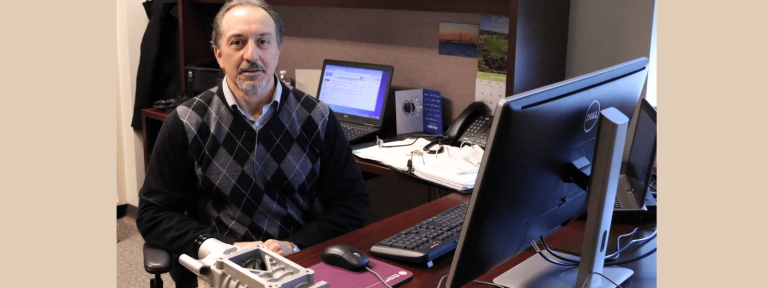
It’s not your grandfather’s, or even your father’s, Mechanics of Fluids textbook. It is so much more. Dr. Bassem Ramadan, professor of Mechanical Engineering at Kettering University, is collaborating with Dr. Merle Potter and Dr. David Wiggert, both Professor Emeritus at Michigan State University (MSU), to develop a new generation of engineering textbook that includes a multi-media component designed to address the learning styles of a tech-savvy generation.
The trio has finished the textbook itself, “Mechanics of Fluids Fourth Edition,” but they are still working on the student solution manual, DVDs with video animations and experiments illustrating various engineering applications of fluid mechanics and video tutorials to cover lessons from the book.
STUDENT solution manual? Traditionally a solution manual is part of the instructor’s version of the textbook used by professors so they don’t have to go to the trouble of solving problems when they assign them from the book, the solution is provided for them, explained Ramadan.
Things have changed it seems. “When I was a student there were typically 10 to 15 problems at the end of each chapter, now there are up to 100 just to address the variety of engineering applications that exist in fluid mechanics,” he said.
“This is cumbersome for the students, so we are developing a student solution manual to give examples of how to solve various types of fluid mechanics problems. It will provide the solutions to about half of the problems listed at the end of the chapters,” Ramadan said.
Engineering students sometimes need to look at how particular problems are solved, it helps them learn the process, he added in reference to the solution manual. However, he still believes students need to create their own way to solve problems, and admits that learning someone else’s process may not work for everyone.
The video tutorials are designed to help students who may miss a live lecture or who didn’t understand the concepts presented during the live lecture. “This way they can rewind if they didn’t catch on the first time around – with this system there is no excuse to fail,” said Ramadan. He plans to finish all the video tutorials by the end of March 2011. There will be transcripts of the tutorials included with the textbook packet as well.
“We are trying to facilitate how the new generation of engineering students learns,” he said. “They may have different learning styles than we did due to new technologies. Textbooks in the past were written for instructors, not really for students, he explained. “Many of them skipped steps and presumed prior knowledge. We wrote this for the students, we want them to find this book and the accompanying multi-media package really useful in their engineering education.”
“These supplemental materials make our textbook unique in the market, and make it stand out,” he added.
This collaboration is the latest chapter in an ongoing relationship for Ramadan, Potter and Wiggert. “They were both my teachers and colleagues while I was at MSU,“ Ramadan said, “and I worked with Merle on another textbook about the basic principles of Mechanical Engineering.”